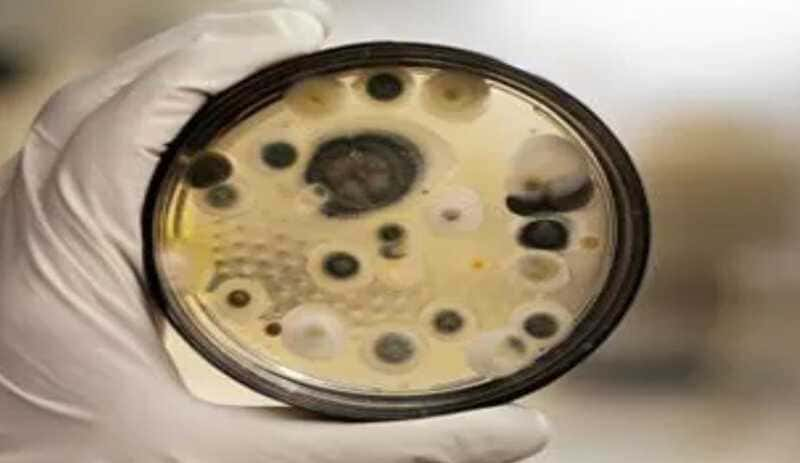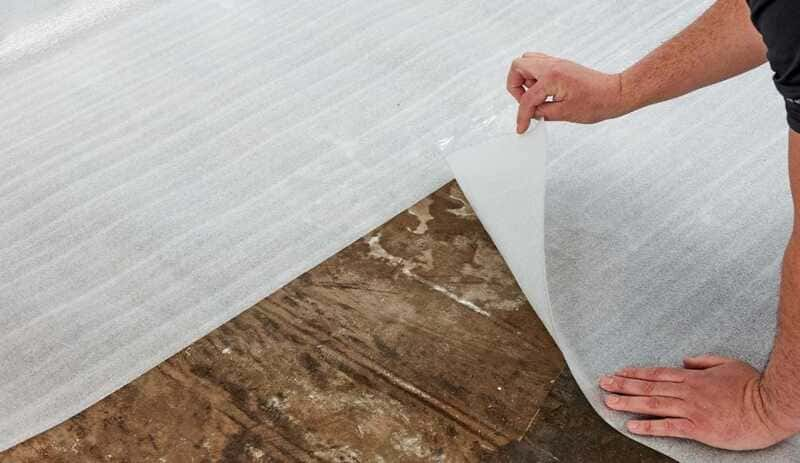Black mold is a common problem in many homes, especially under laminate floors. Laminate floors, being in constant contact with moisture, can be an ideal place for mold to grow and spread. Not only can it affect the appearance of your home, but it can also be detrimental to the health of you and your family.
It is important to take steps to prevent and treat black mold in this area to maintain a safe and healthy environment in your home. In this article, we will explore how to remove black mold under laminate flooring, the causes that lead to it, and the steps necessary to prevent its reappearance.

What is black mold and how does it form?
Black mold is a type of fungus that thrives in damp, dark environments. It is characterized by its black, damp appearance and can have an unpleasant odor. It can form anywhere there is a combination of moisture and organic materials, such as wood, paper or fabrics.
In the case of laminate flooring, black mold can form underneath when moisture seeps through the joints or due to poor ventilation in the room.

In addition, water leaks and wet areas can be a focus for the formation of black mold. For this reason, it is important to maintain proper moisture control in the home and address any leakage or ventilation problems immediately.
Identifying the causes of black mold under laminate flooring.
Black mold under laminate flooring can be caused by a combination of factors including lack of ventilation, excessive moisture and lack of proper maintenance. Excessive moisture can come from sources such as water leaks, water vapor condensation and water buildup on the floor surface due to improper cleaning.
Lack of ventilation can also be a major problem, especially in spaces with poor air circulation and high humidity. Finally, lack of proper maintenance can also contribute to mold growth under laminate floors, so it is important to keep floors dry and ventilated to prevent mold growth.
Health risks associated with exposure to black mold.
Black mold is a type of fungus that thrives in damp, dark areas, such as laminate floors. Exposure to these fungi can have serious consequences for human health, especially for people with respiratory diseases or allergies.
Black mold releases spores that are dispersed into the air and can be inhaled. Some of the symptoms that can arise due to exposure to black mold include eye and throat irritation, headaches, fatigue, difficulty breathing and in severe cases, even asthma and bronchitis.
It is important to take steps to eliminate black mold under laminate flooring and to remove it when it occurs.
How to assess the severity of mold infection.
To assess the severity of black mold infection on laminate flooring, a few important factors must be considered. The extent of the infection is one of the clearest indicators of the severity of the problem. If the infection is limited to a small area, it is likely to be easier to treat and control. However, if it has spread to a large area, more intensive work may be necessary to resolve the problem.
In addition, it is important to consider the type of laminate flooring you have, as some types are more resistant to mold and mildew than others. Moisture in the area is also an important factor to evaluate, as mold needs moisture to grow and proliferate.
Finally, it is important to note any health symptoms related to exposure to black mold, as this can be an indicator of the severity of the infection.
Tools and products needed to remove black mold.
To implement the task of how to remove black mold under laminate flooring, it is necessary to have the right products and tools. One of the most common products used for this task is a specific mold cleaner, which is usually a sodium hypochlorite solution. It is also important to have rubber gloves, a mask, goggles, and a spatula to remove the mold without damaging the laminate flooring.

It is important to take proper precautions when working with chemicals, such as making sure the room is well ventilated during the cleaning process. In addition, it is advisable to protect nearby furniture and appliances with plastic sheeting to avoid accidentally damaging them.
Steps to properly disassemble and clean laminate flooring.
To properly strip and clean laminate flooring and remove black mold, it is important to follow a series of precise steps. First, you need to make sure you have adequate ventilation and protect the surrounding areas to prevent further damage.
Next, the affected laminate should be carefully removed and set aside. Next, the underlying surface needs to be cleaned with a specific mold solution and allowed to dry completely.

Once the surface is dry, the laminate can be replaced and the joints sealed to prevent future mold infections.
Finally, it is important to maintain good ventilation and moisture control in the future to prevent black mold from reappearing on laminate flooring.
Tips for preventing black mold under laminate flooring in the future.
Preventing black mold under laminate flooring is important to maintain a safe and healthy home environment.
Some tips that can be followed to prevent mold growth include: maintain good ventilation in the home, especially in damp areas such as the bathroom and kitchen; control humidity levels in the home through dehumidifiers or fans; immediately repair any sources of leaks, such as drips or water leaks; and clean and dry laminate floors after any spills or leaks.
In addition, it is important to regularly inspect laminate floors for signs of mold and mildew and take immediate cleanup and preventative measures if necessary.
By following these tips, you can help prevent the appearance of black mold under laminate floors and maintain a safe and healthy home.
Final considerations and recommendations for keeping a laminate floor free of black mold.
In addition to following the recommendations mentioned above in the process of how to eliminate black mold under laminate flooring, it is important to take into account certain factors to prevent the appearance of black mold in the future. Good ventilation is essential to maintain a dry environment and reduce humidity, which is essential to prevent mold growth. Control the humidity in your home by using a hygrometer to monitor moisture levels in the air. Making sure you have an adequate ventilation system and making water leak repairs in a timely manner can also help prevent black mold from forming.
In addition, it is important to avoid the accumulation of damp objects on the floor and to maintain good hygiene to prevent the accumulation of dust and dirt that can be an ideal habitat for mold. Finally, it is important to regularly monitor the laminate flooring for any signs of black mold and take immediate action if necessary.
In summary, preventing the occurrence of black mold under laminate flooring requires an integrated approach that includes taking preventive measures, regular monitoring and timely action in the event of infection. By following these guidelines, you can keep your laminate flooring in good condition and protect your family’s health.

